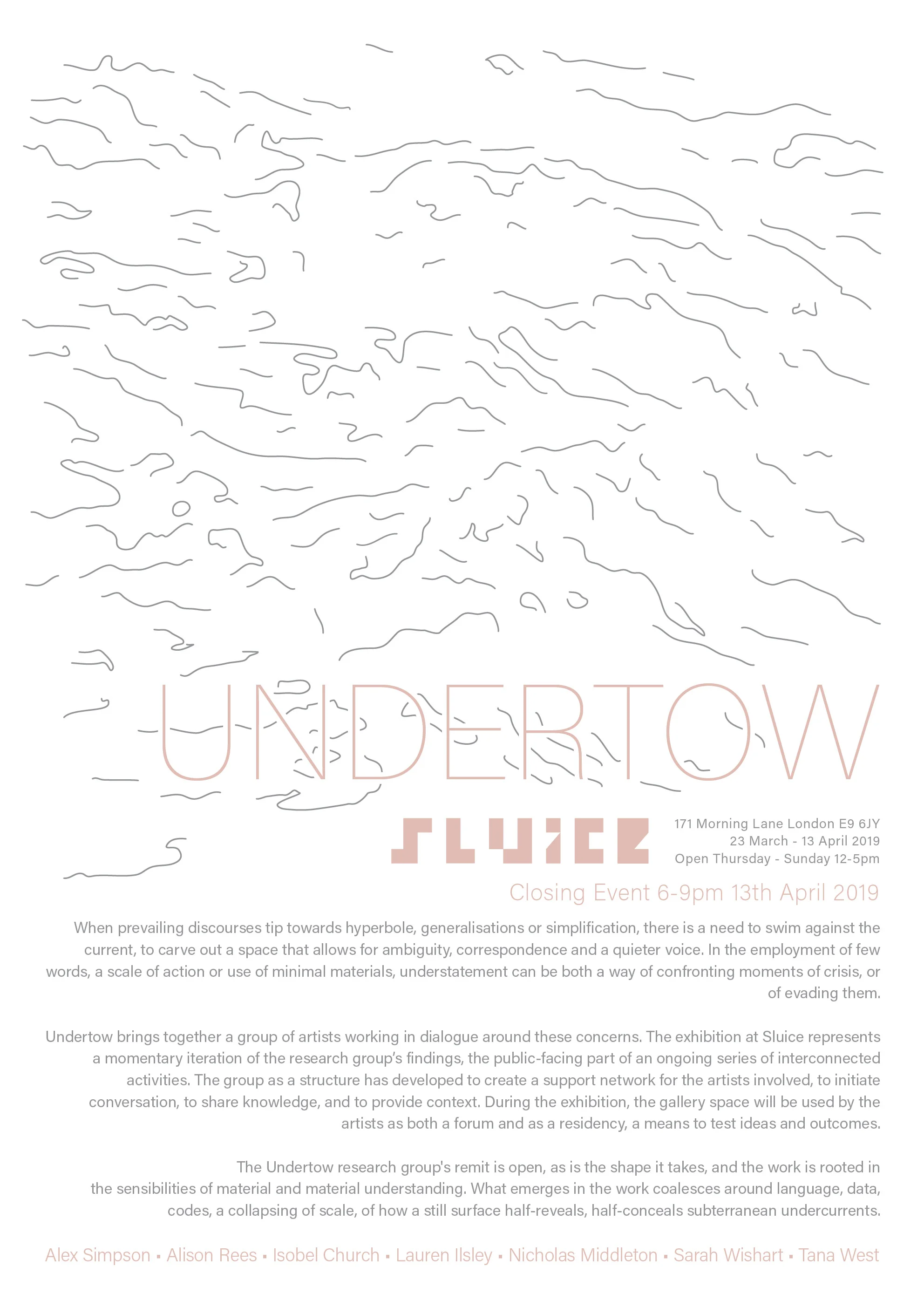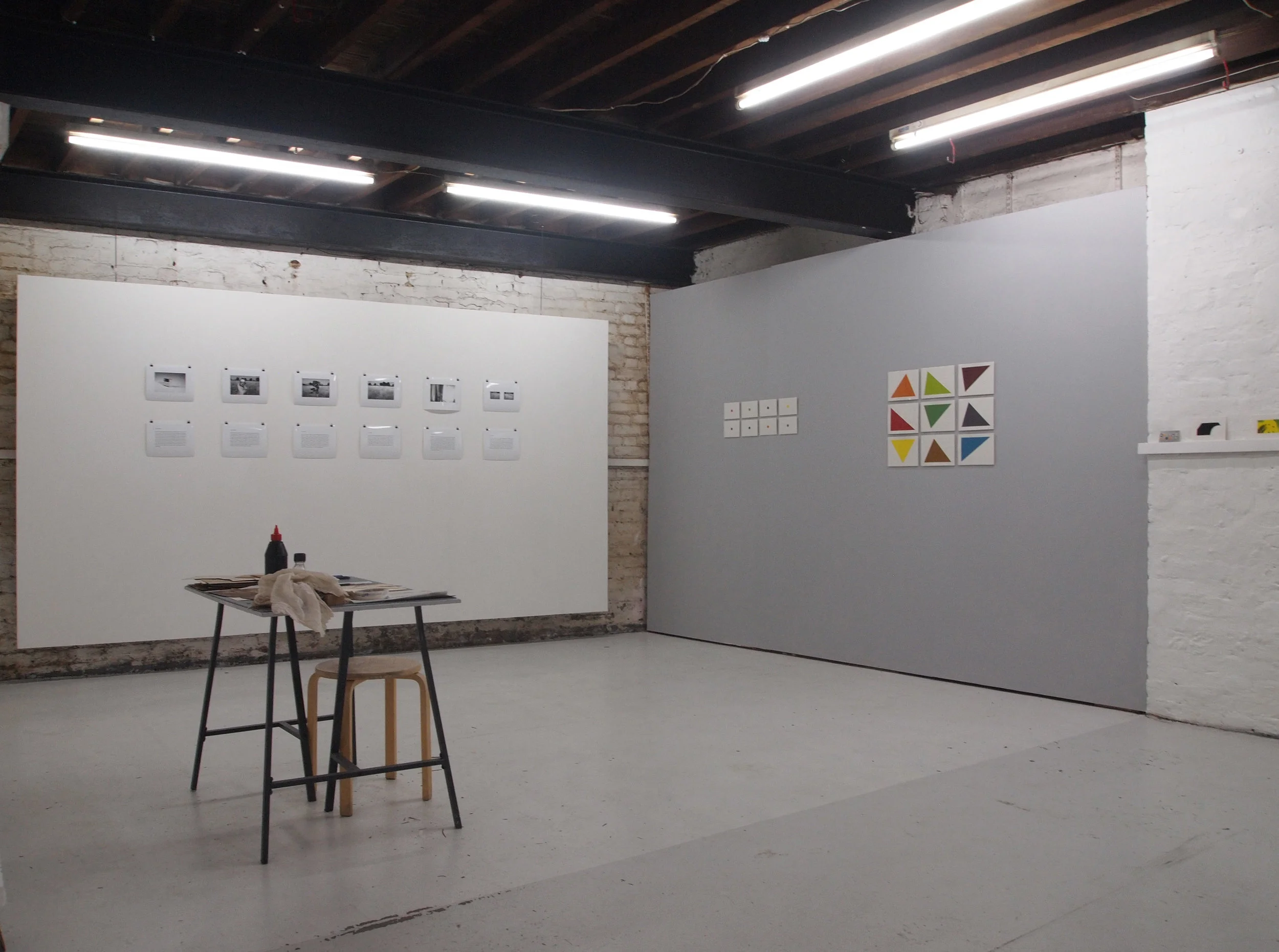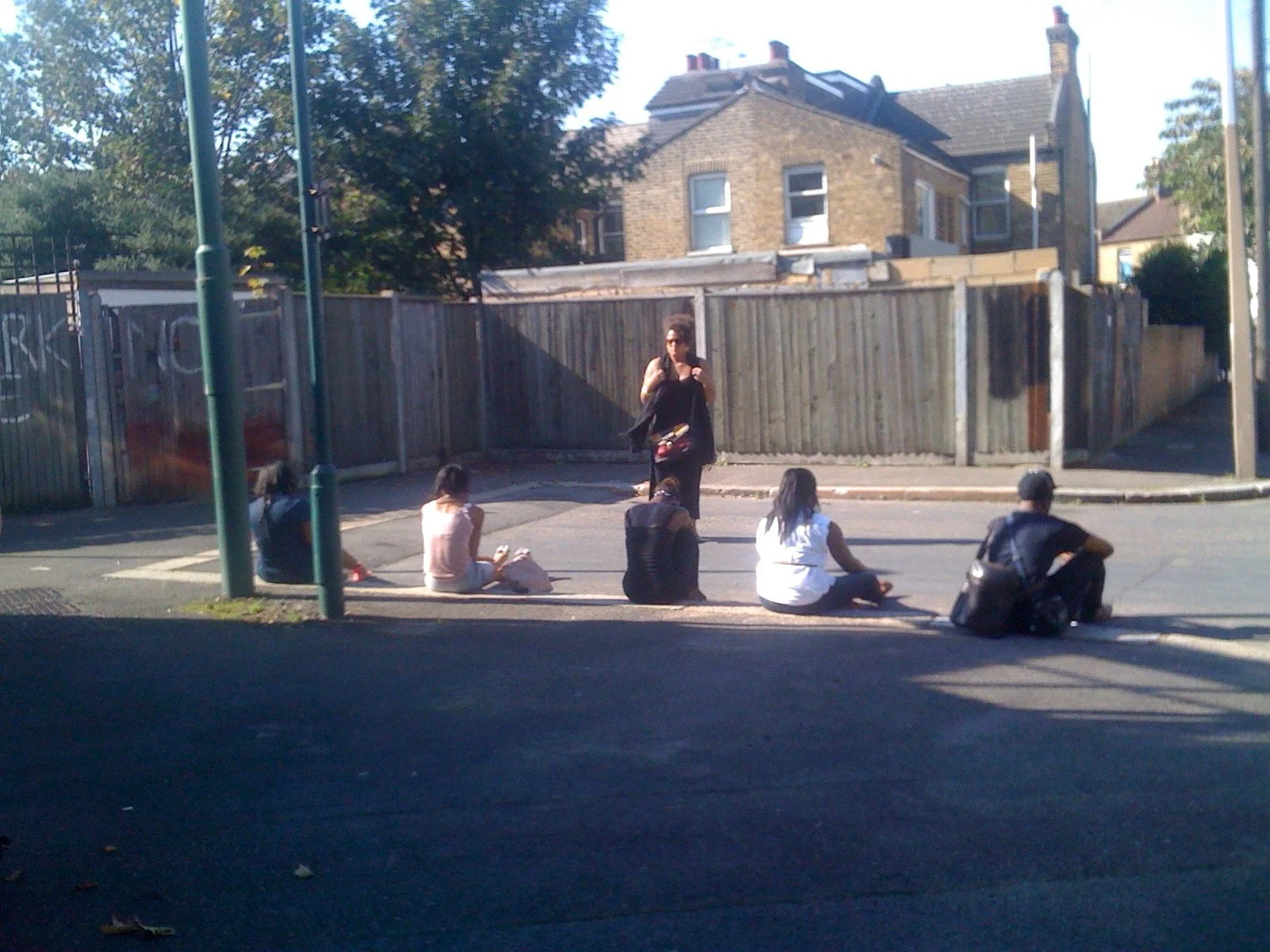Undertow
Undertow is an artist collective and research group that includes Alex Simpson, Alison Rees, Isobel Church, Lauren Ilsley, Nicholas Middleton, Sarah Wishart and Tana West - read more on the blog.
In February 2023, our latest show opened at Unit 1 Gallery in Notting Hill.
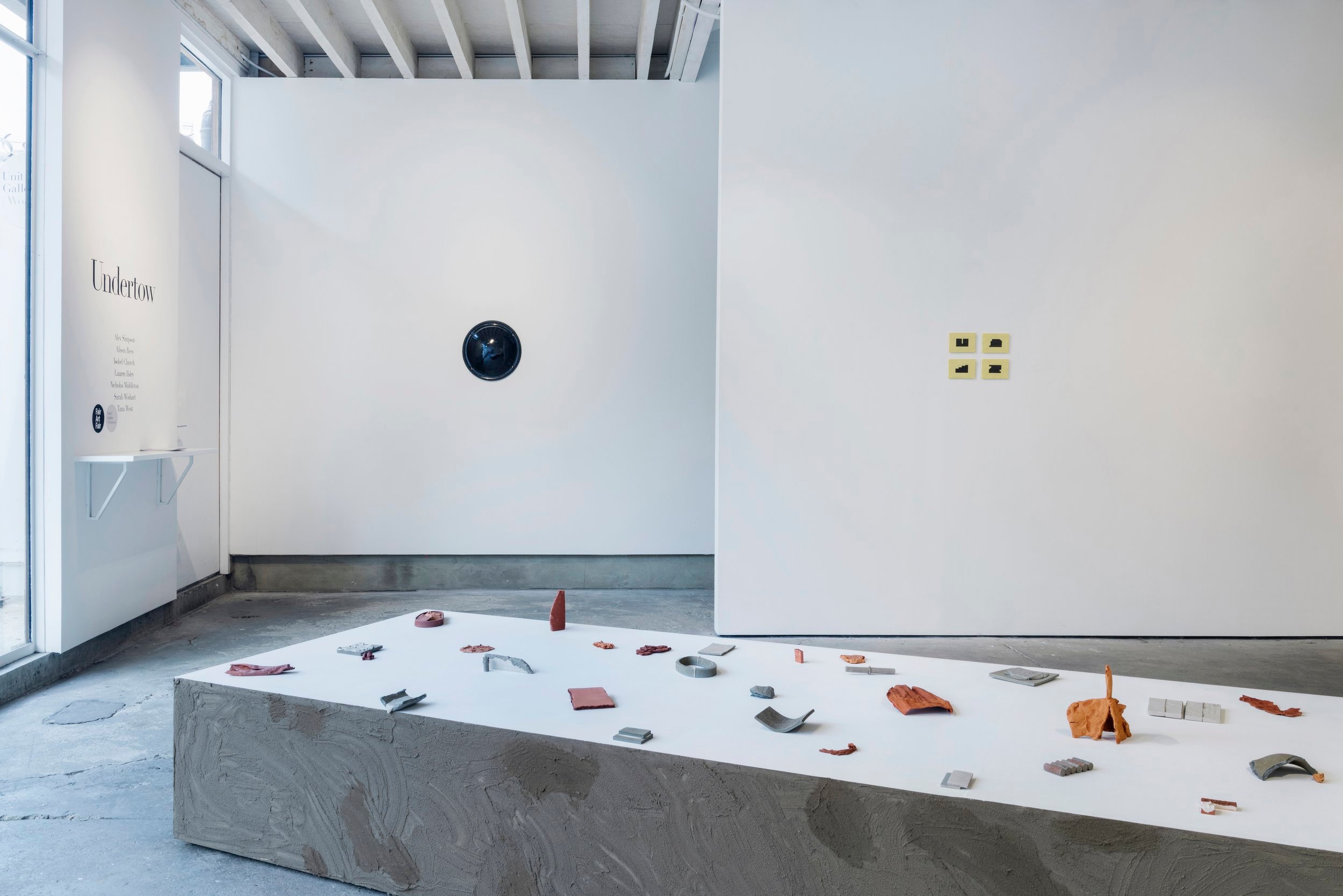

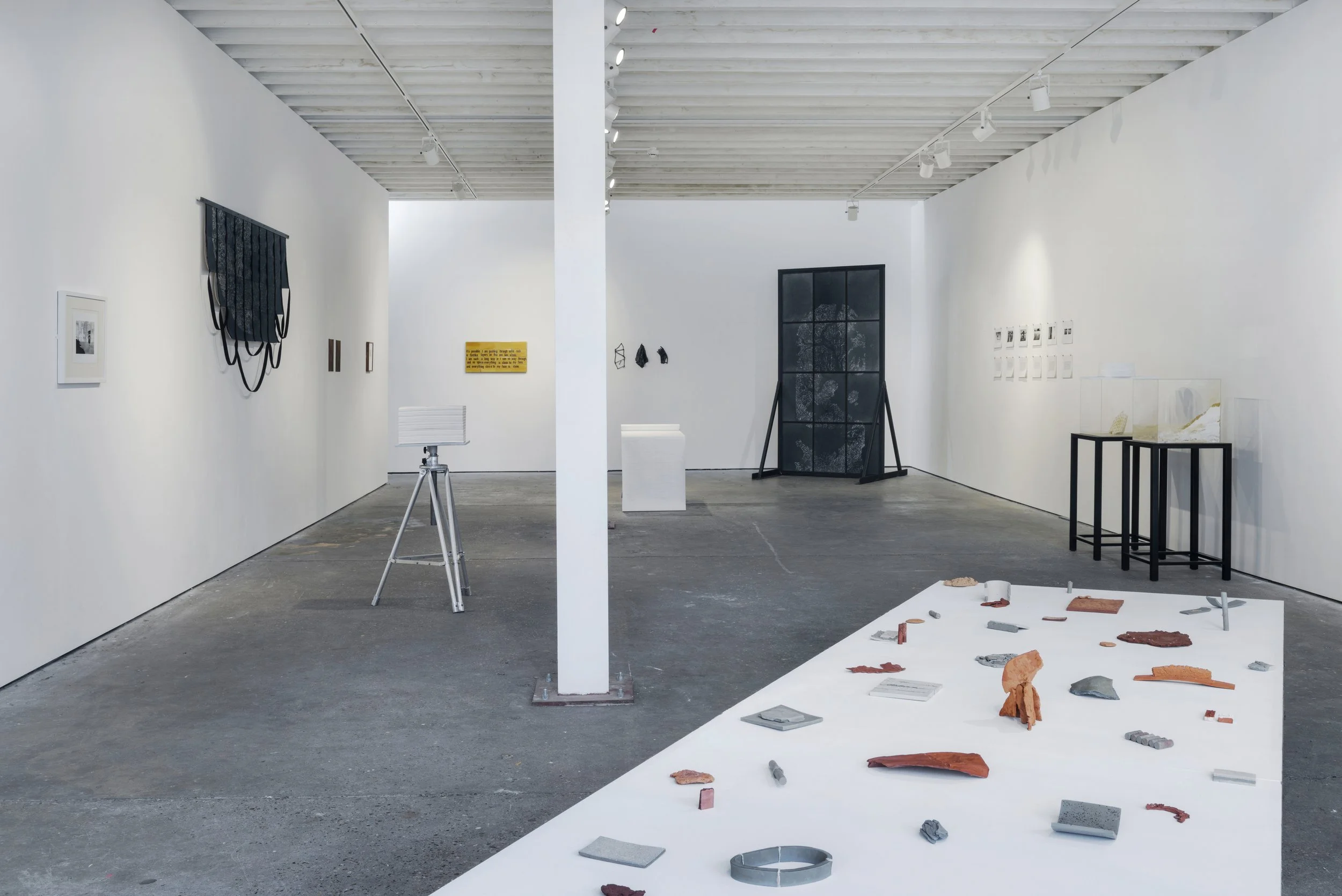

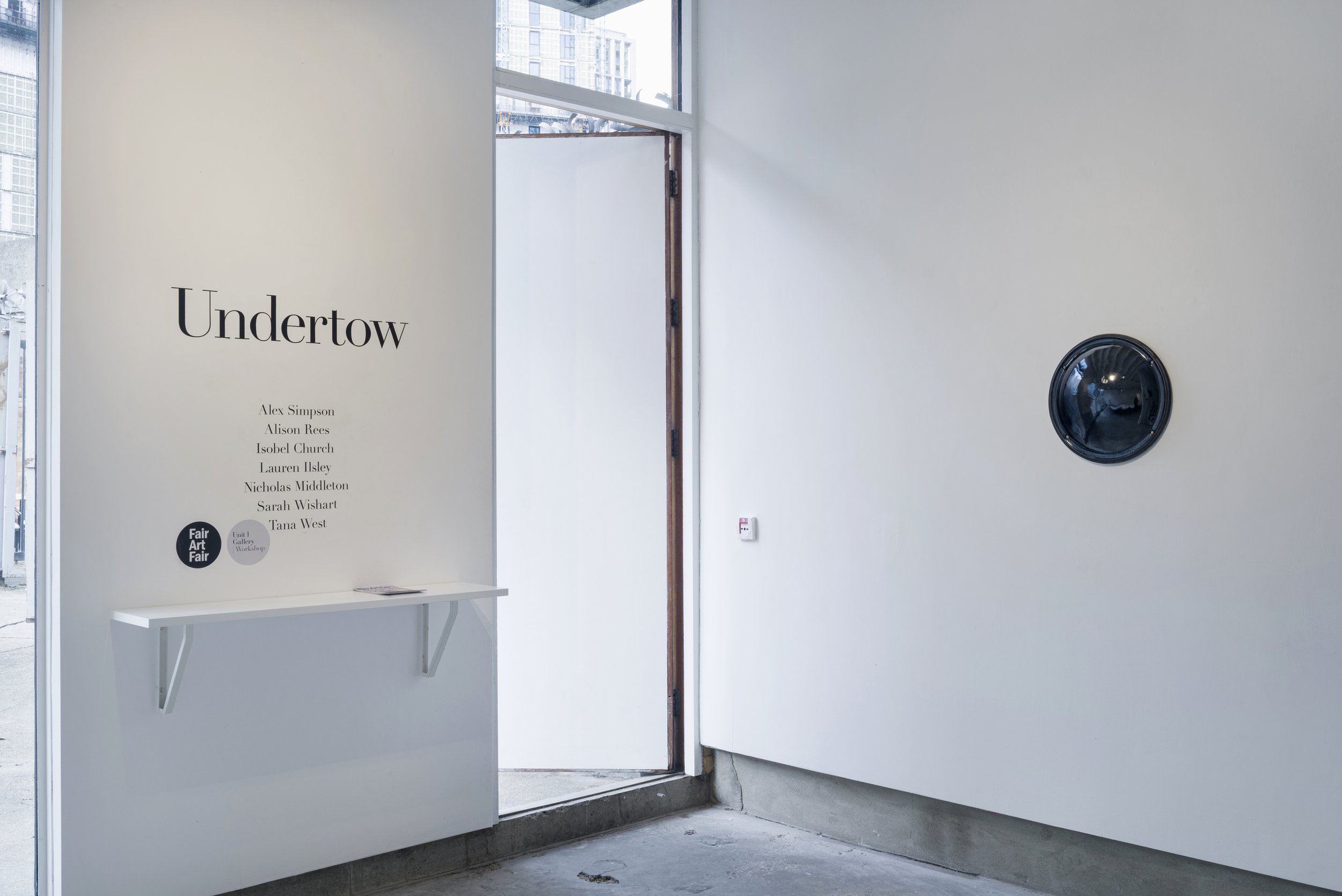

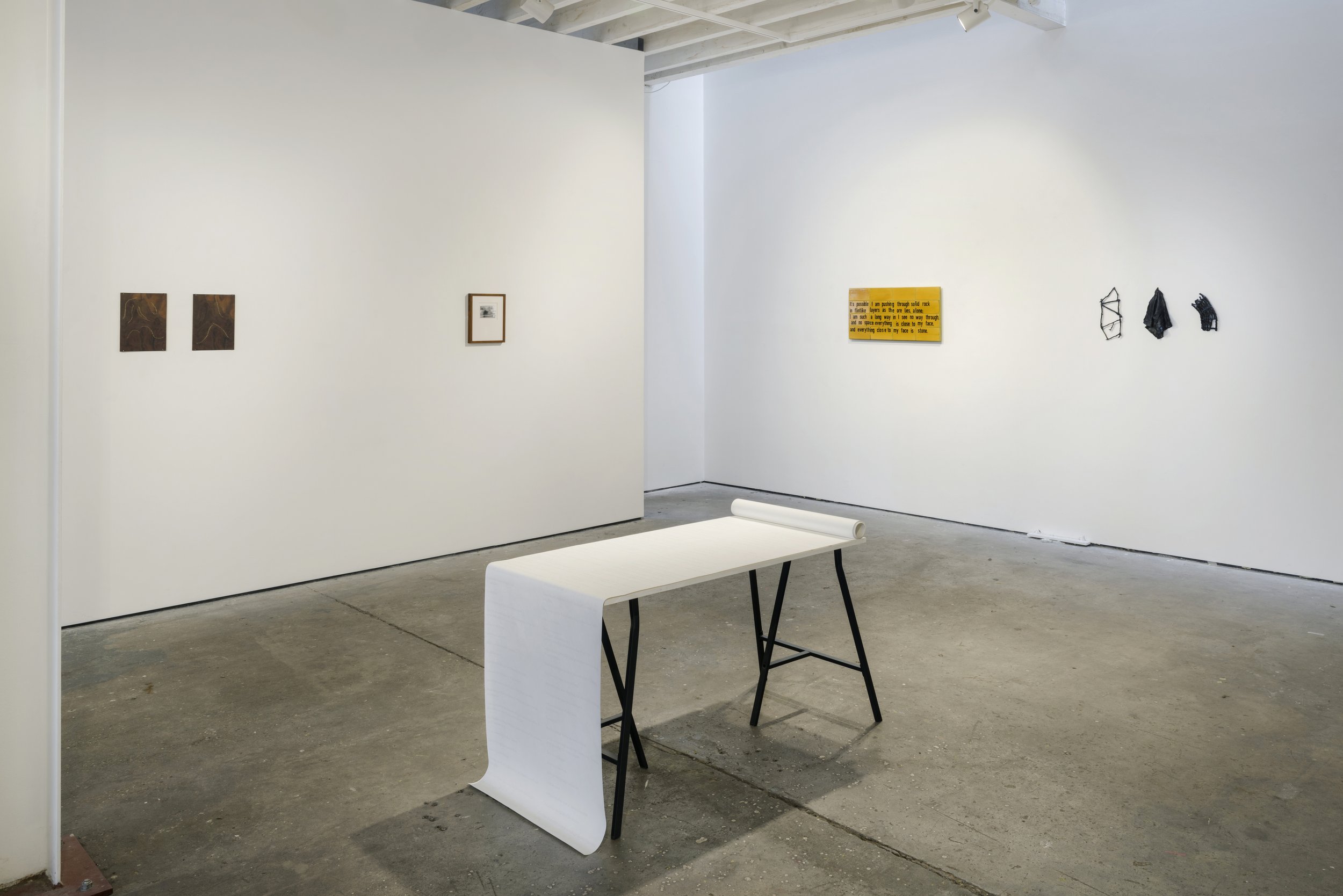
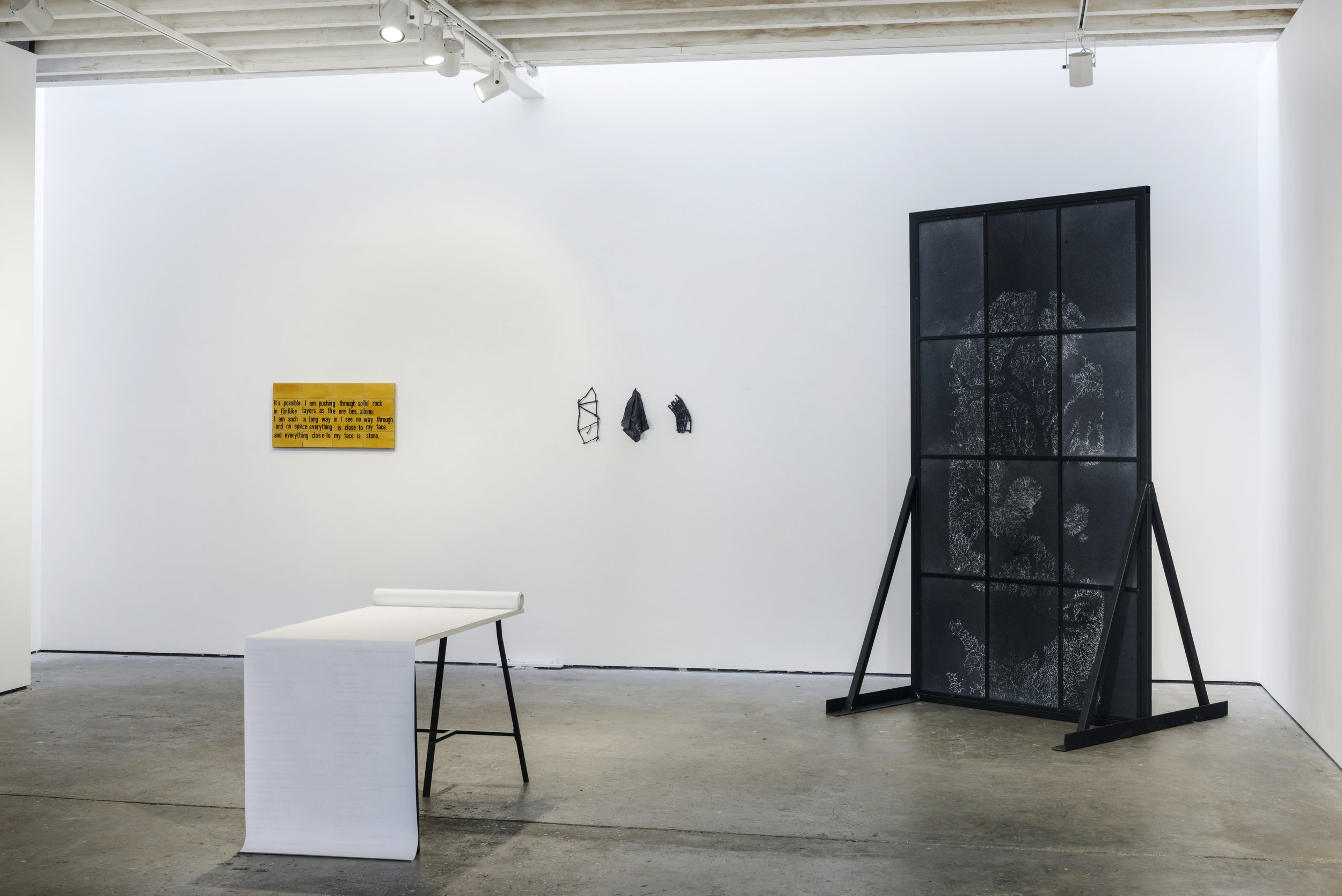
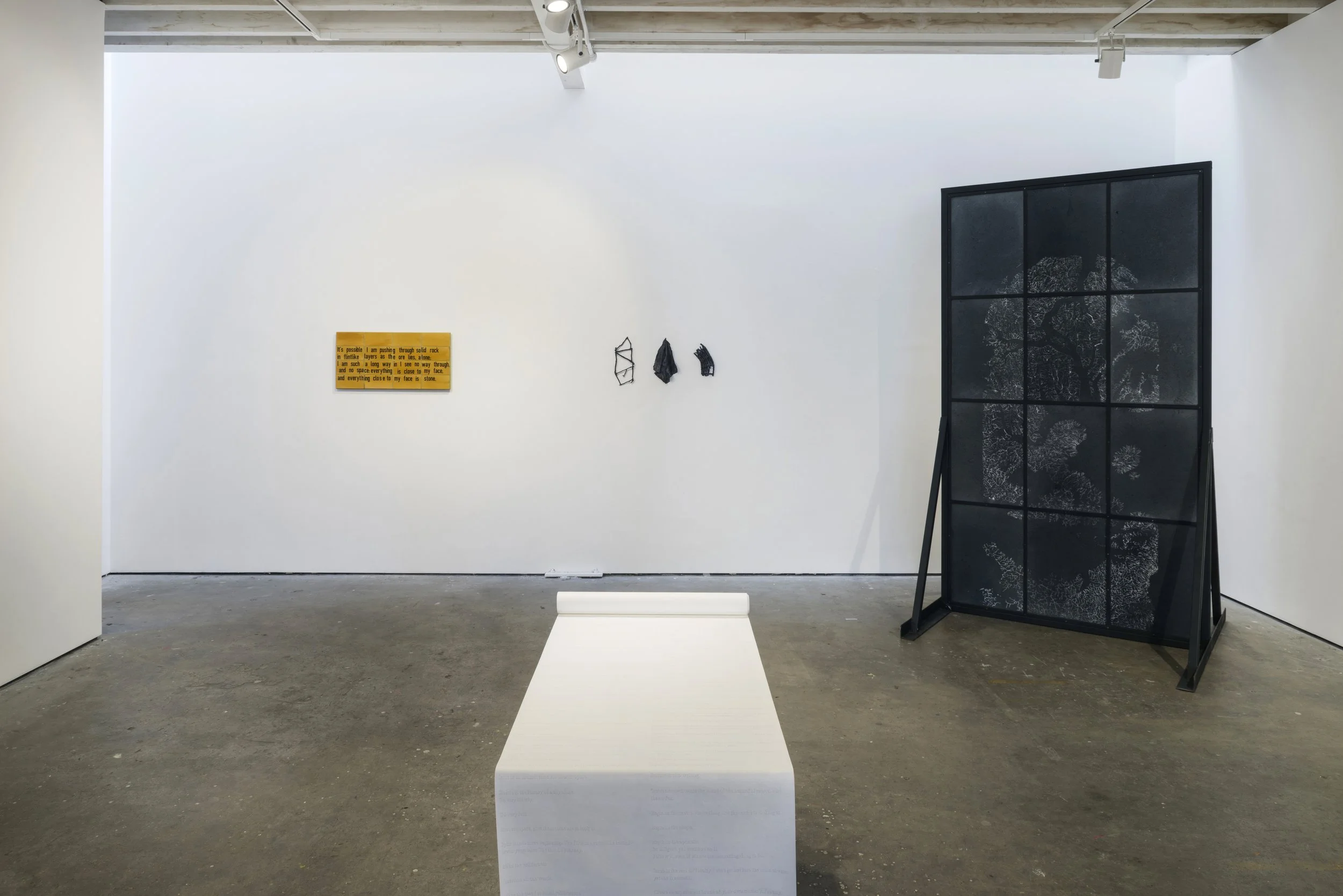



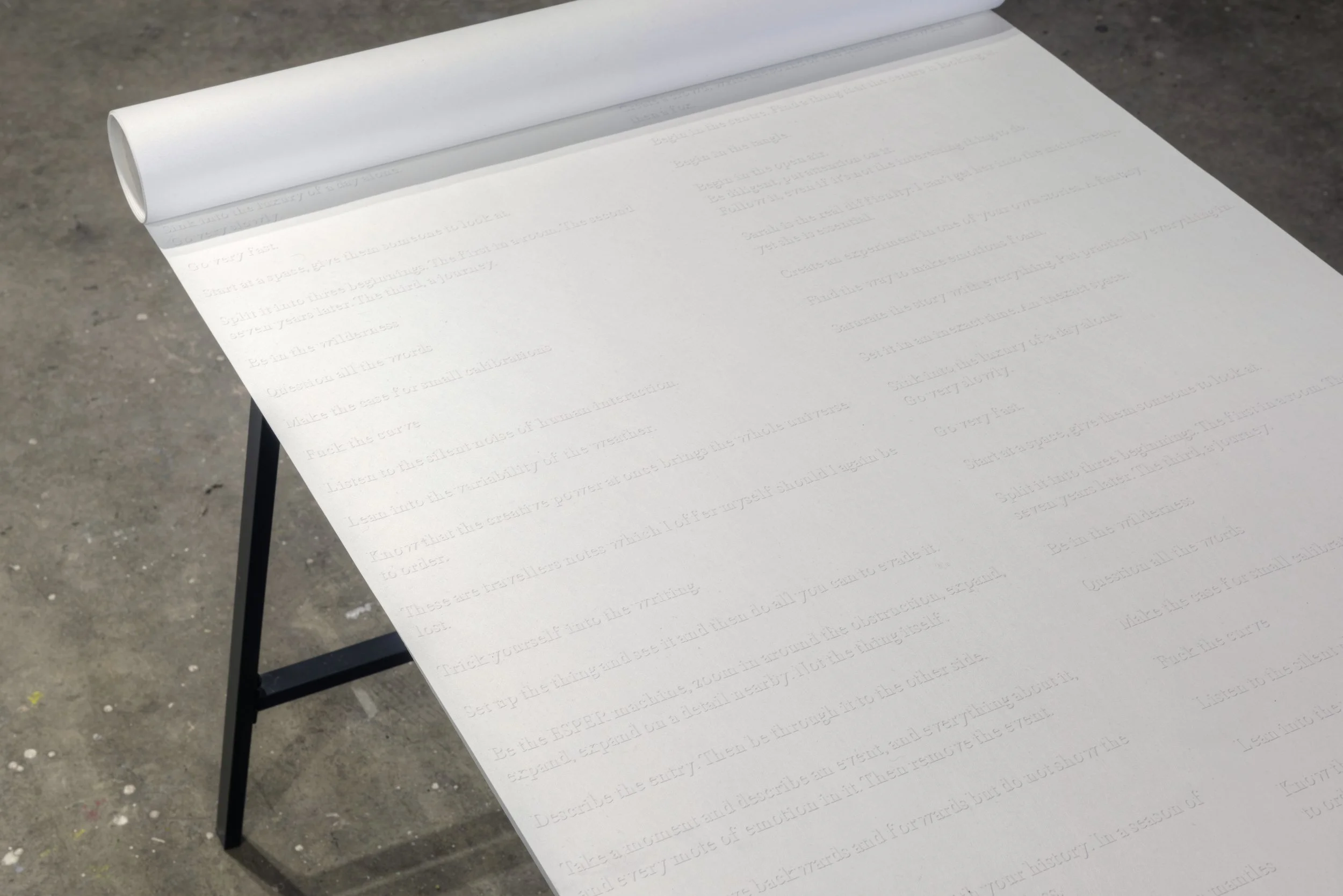
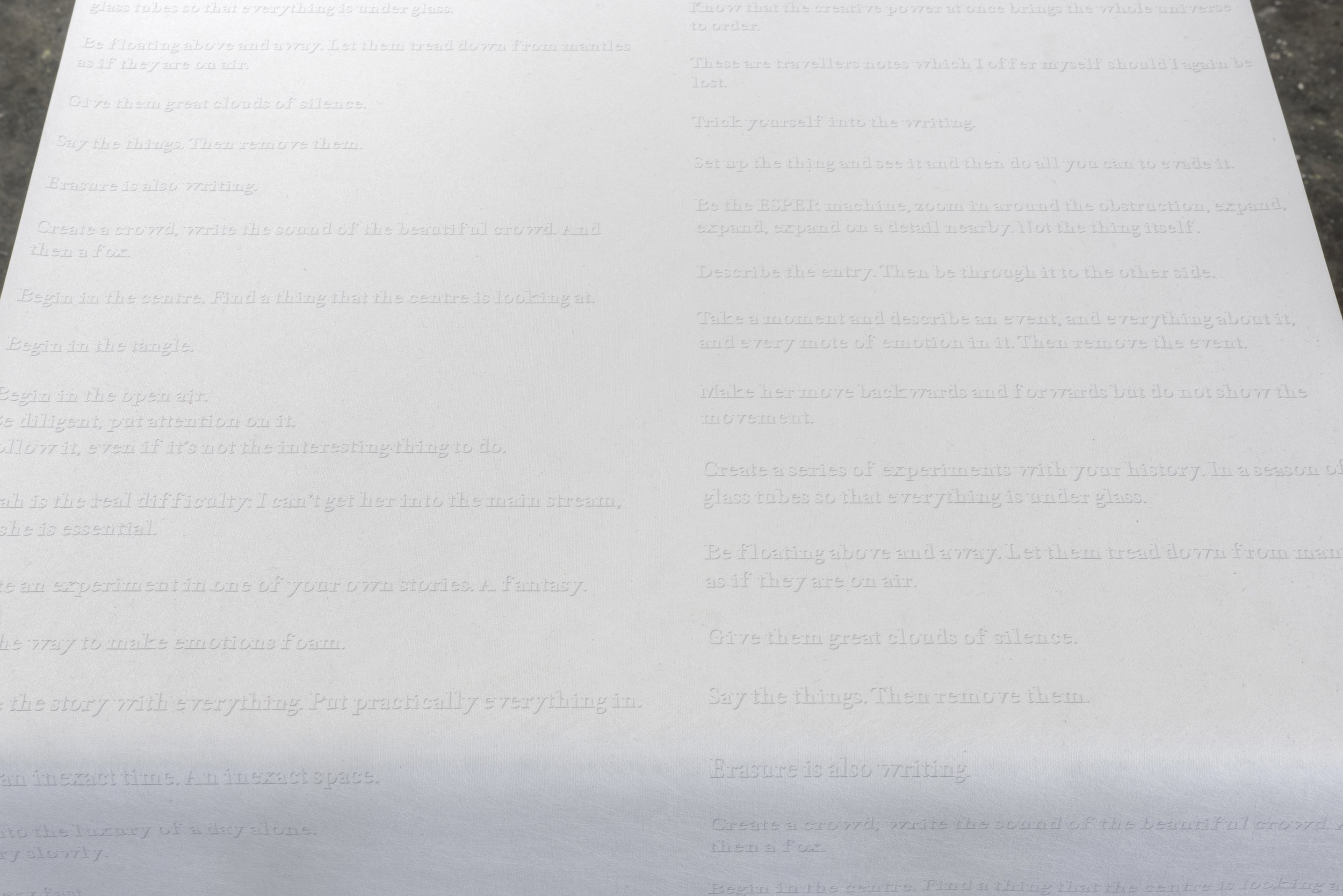
To read the text we put together for the most recent show - download it here.
‘Hope locates itself in the premises that we don’t know what will happen and that in the spaciousness of uncertainty is room to act.’ – Rebecca Solnit, Hope in the Dark, 2004/2016
The winning proposal for the group exhibition brings the Undertow Research group together for the first time since the 2019 exhibition. Conceived as the first in a series of public-facing outcomes, created in the process of coming-together, a stepping-off point for the next. Undertow now has the collaborative space, to regroup, to re-open conversations and begin new ones, to consider the potential of hesitation as a development of Undertow’s original ethos. Their material practices span text, ceramics, wood, paper, paint, film, photography; the exhibition is a means to test new ideas in the absence of pre-conceived outcomes, but with purpose and direction. This exhibition would allows the group to continue these dialogues and would give us the opportunity to congregate, to explore ideas, to develop and test, to fail and to quietly resist.
Hesitation has been cast in a negative light, seen as a sign of indecision or a lack of confidence. In times of crisis, there is praise for immediate action, simple solutions, and a sense of resolution. Eschewing the performative nature of such actions, more often than not a cover for inaction, and instead embracing hesitation as a generative process, an expansive moment, where complexity is acknowledged. Hesitation enables, revisions and small gestures of resistance, a slowing down or changing tack. New ideas emerge from intervals of rest.
Undertow brings together a group of artists working in dialogue around these concerns. The group as a structure has developed to create a support network for the artists involved, to initiate conversation, to share knowledge, and to provide context. The Undertow research group’s remit is open, as is the shape it takes, always rooted in the sensibilities of material and material understanding.
Undertow can shift and move through many iterations, engaging with the same or different artists as a concept.
”Moving below the surface current and in a different direction, the subterranean emotion is held carefully under the surface, as the understated surface half reveals and half-conceals the turmoil beneath”
O’Neil, Michael and Callaghan, Madeleine (editors), ‘Situated Sequences and Marginal Voices’ , p.232, in Twentieth Century British and Irish Poetry:Hardy to Mahon, Wiley-Blackwell, Oxford 2011
On Getting Out of Stuck - And Getting Into the Archive - A Podcast
“Linked Transmission Duration Image 02’ © Nicholas Middleton www.nicholasmiddleton.co.uk - Cyanotype 2022
In the summer of 2021, The Royal Conservatoire of Scotland commissioned a number of artists to make a piece of artwork and a podcast – and gave us a very wide remit as to what these might look like.
I am very interested in uncovering different kinds of processes in relation to art making - pathways to getting inspired to make work or to get ourselves out of stuck. All things we’ve found more difficult than usual within a pandemic.
In response to the commission ask - I created two things - firstly I dipped into the background and thinking around archives, and made a podcast from interviews with three people from three key archives that I thought would be interesting and useful for students. Secondly I made an artwork from my own archive.
From those conversations I hoped to provide inspiration and techniques from the interviews, field recordings and archive collections that featured.
You’ll learn about creating and curating your own archive by hearing from people working with a range of library and archival collections including live art and performance in Glasgow and beyond. There are interviews with Lois Kiedan from Live Art Development Agency, Louise Lawson from Tate and Conor Walker from the National Library of Scotland. At the end of the podcast you can hear the sound artwork.
The artwork aspect came out of a spot of tidying I did last year under the first lockdown when I was stuck in my room away from my studio and life. I thought I could something useful and something I’d been putting off for a while. I went meandering through the mess of archives collected over many years from my part-time PhD from when I was doing lots of interviewing lots of people about two artworks – Jeremy Deller’s ‘Battle of Orgreave’ – the pretty famous re-enactment of a key battle between striking miners and police as part of the 84 -5 Miners’ Strike, and Graeme Miller’s epic audio soundscape relating to stories and histories lost as the result of the building of the M11 link road - ‘Linked’.
I listened to lots of those interviews and decided to create a piece ‘after’ Graeme’s work from some of the recordings I’d done over that time.
Linked is a walk that can take up to about five hours, as you walk through suburban East London, listening out for the soundscapes along a five-mile route in East London – made up of snippets of interviews and sound and music. My soundscape then is made up of snippets from my interviews about these works as well as the one time I took a group of people on the walk at night from 1am to dawn – that we did in silence. I had partially recorded that experience and it forms the base of the soundscape along with extracts, repetitions, and memories from those interviews.
This is particularly timely as Graeme Miller took Linked down at the end of 2021 after 18 years of the artwork talking into the air in Leyton and the surrounding area. Those voices are now silent.
But you can find out more about a special event taking place in the autumn of 2022 by signing up to my sporadic newsletter at the bottom of the page.
Extract from Conor Walker “Pistol Shrimp, Muck” Sail Britain: Life of Islands residency 2019 https://aporee.org/maps/?loc=46316&snd=52615
“Thirty eight (degrees of separation)” © 2021 and used with kind permission of Kevin Sanders – https://hairdryerexcommunication.bandcamp.com/merch/kevin-sanders-embers
“Casiodrone” and “Wedding Song" © 2021 and used with kind permission by Daniel Thomas – https://sheepscar.bandcamp.com/album/codeine
Thanks to Lois Kiedan, Louise Lawson, Tate, Conor Walker, The National Library of Scotland, Live Art Development Agency, and especially to Mark Godber, Graeme Miller, and Tana West for being kind enough to let me use our conversations again.
This is a collaborative film project between myself and Nicholas Middleton that we’ve been slowly making since 2012 that captures footage from the Olympics through to Brexit where London’s relationship with Europe was recaliberating. The film’s completion has been delayed because of issues relating to Covid but will be finished by the end of 2021.
This documentary is our love song to London scored with the ambient sounds of the city mixed with stories from four European artists (Franko B, Noemi Lakmaier, Xavier de Sousa and Vlatka Horvat) who relocated to London at different stages in their lives and practice.
The film footage walks us from the south east to the east of London over the course of nine years. It starts from what was the Heygate Estate around 2012 in the Elephant and Castle and through to Beckton Alps, the spoil heap in East London near London City Airport, where there was once a dry ski slope opened by the Princess of Wales. The walk includes footage of the mile long walk under the Thames filmed walking through the Rotherhithe Tunnel with a steady-cam. These spaces speak to our lives as artists in the city as well as to a narrative about the constant development of a changing landscape.
"Geographies of Fear" is a prospective photography show featuring the work of artists Anthony Carr, Nicholas Middleton and Sarah Wishart - concerned with challenging perceived notions of danger or civic threat, and to consider how we might resist ways we're directed to experience a place.
"Geographies of Fear" is a photography show featuring the work of artists Anthony Carr, Nicholas Middleton and Sarah Wishart - concerned with challenging perceived notions of danger or civic threat, and to consider how we might resist ways we're directed to experience a place.
For more information - email sarah@sarahwishart.com
‘Here be monsters’ was the inscription used historically by nautical cartographers to indicate a space of uncharted water. If the mapmakers had no information as to what might be in an area of map, they filled it with monsters; ship-devouring kraken; huge whales with sharp teeth, Neptune on the warpath, or viciously gigantic mermaids. This practice suggests that the unknown place is both somewhere to be terrified of and also may be filled with the fantastic.
In the process of collating these images - geographies of fear were revealed - showing up imagined monsters within these maps. It suggested once again that there is an assumption that the unknown space (the crucially other-ed space) is something to be terrified of, a cause of the anxiety that causes the UK to have one in three of the world’s CCTV cameras on our streets, the paranoia which leads to the construction of invisible ways to corral and control our movements around urban spaces?
In an attempt to reveal and disrupt these geographies of fear, Carr, Middleton and Wishart use different technological methods to uncover fissures whilst creating the means for the fantastic to be seen.
I was the guest editor for the Spring/Summer 2019 edition of Sluice magazine - to find out more about the magazine and subscribe - http://sluice.info/. Here’s the editorial from that edition.
“The concept for this edition came out of a conversation I had with Karl England about namings or rather an artist-led workshop that enabled me to take on a different persona to help shift my practice. Karl had originally wanted me to look at ‘Identity’ in this issue but because of the developments in my thinking around how an alter ego was put to work in this Homme de Plume workshop – I was interested more in the framework of looking at the ways art fictions are created, in terms of an artist’s identity or persona, and how fictions lie across/drive/speak to our work. As the workshop had also been so collaborative and co-supportive - I was also interested in seeing how one artist’s practice might shift or colour another artist’s practice. Where might a consideration of the way artists share and offer up their practices take us in relation to the way artwork is constructed, built, or deconstructed?
Sluice is an artist-led venture both in terms of the direction, content and contributors to the magazine – and in the way that Karl England drives and develops the programming at the gallery space. Artist-led ventures feel very familiar to me, coming from a background of performance art, which is very often an inevitable DIY scene, full of people trying to shift spaces and thinking to accommodate different kinds of performances. Within this shifting landscape, transformation is key in the way that people subvert and reconjure faces, bodies, voices and positioning.
In explaining the concept of the edition to artists I spoke to, I kept returning to ‘nomenclature’ as a way of classifying things with names and idents. In the articles and discussions and interviews within this edition, the naming of the thing kept on being a thing of significance – even the use of the word ‘artist’ might be up for debate - what happens when an artist uses an idea donated by a non-artist for example? In the mix we hear from artists who celebrate the words they are called, the concepts they float up against and the bodies they are able to shift perspective on. In addition, many artists find the artistic challenge of rerouting themselves, reimagining and reconstructing their personae an important and necessary journey. Every iteration of an artist’s career may be a reconfiguration of something they have tried before, enacting and re-enacting “This is not how we started first time round. How did we start last time?”
At the heart of the edition is a celebration of the organisation that made the inspiring workshop Homme de Plume possible – the Live Art Development Agency – who have been running various strands of support and development for artists now since their founders left the ICA. Housed in different buildings over that time across London the DIY strand of artist led professional development workshops since the early noughties and who celebrated their second decade during the period of time this edition was being co-constructed. The importance of the DIY programme with LADA is that it isn’t simply artist-led but artist to artist engagement. The ongoing development and connection with the sector and within a temporary collectivity is important to the ways that artists feel supported and development opportunities like this can have long lasting impact. My first foray into the world of the DIY workshops 12 years ago has seen a subtle shift in my own practice and a number of projects that were conceived of during those three summer days. There is a danger that these workshops might be more than a day of focussing on your own practice this kind of development might be practice-changing or even life-changing but you know – what’s in a name?”
The project
In 2018, the theatre company Forest Fringe - taking a sabbatical from their decade of enabling people to put on shows at the Edinburgh Fringe - ran a year long DIY film school at Somerset House with the notion that at the end of the year - they and a group of amateur film obsessives - would make a feature film.
My involvement
As Executive Producer on the project I helped the team to raise enough funds in our crowdfunder to make it a reality and one of 15 writers who collectively created a script together through a number of workshops and sessions.
September 2019 we went to Jersey for three weeks for the shoot.
Here’s some things that got written about the experience
https://exeuntmagazine.com/features/forest-fringe-film/ by Andy Field
In 2022, the film was premiered at the Edinburgh International Film Festival
This was the film I made to support the crowdfunder “In September 2019 Forest Fringe and a team of artists and volunteers, working with a professional cinematographer and sound recordist, will shoot a full-length feature film in the space of three weeks in Jersey, with anyone welcome to participate in the process. The film will be strange, sad, comic and inventive. It will tell the story of story a “Dream Agency” on a remote British island that recreates people's most vividly remembered dreams.”

